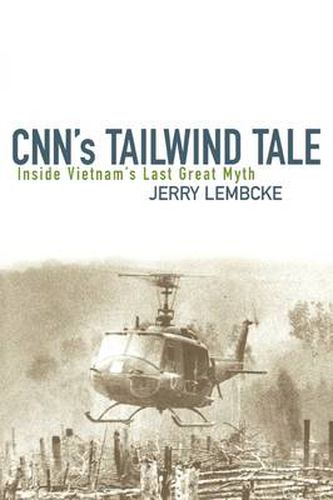Readings Newsletter
Become a Readings Member to make your shopping experience even easier.
Sign in or sign up for free!
You’re not far away from qualifying for FREE standard shipping within Australia
You’ve qualified for FREE standard shipping within Australia
The cart is loading…






On June 7, 1998 CNN broadcast Valley of Death, the story of a 1970 raid into Laos by U.S. Special Forces. According to the report, Operation Tailwind had used sarin nerve gas to kill U.S. soldiers who had defected to the North Vietnamese. After a firestorm of controversy, CNN retracted the report, ruining the career of rising star April Oliver and compromising the network’s credibility. Called the TV news story of the year by TV Guide, CNN’s Operation Tailwind fiasco was the biggest news scandal of the 1990s. Hearing about the story after its broadcast, Jerry Lembcke was struck by its resemblance to war legends and myths. His search for the origins of the tale, and an explanation for why top-level journalists would believe it, led him into the shocking world of political paranoia, where conspiracy theory, popular culture, religious fundamentalism, and the fantasies of war veterans cross paths. Approaching the story as a case study in why people believe what they do, Lembcke reversed the normal inquiry into how journalists shape what the rest of us know, to ask questions about the social forces that shape what journalists know. With a likeness to Herbert Gans’ 1980 classic, Deciding What’s News, Jerry Lembcke’s CNN’s Tailwind Tale is at once a study of American journalism that opens a window on America itself. Special link to the author’s interview on Radio Nation discussing this new book - CNN’s Tailwind Tale
$9.00 standard shipping within Australia
FREE standard shipping within Australia for orders over $100.00
Express & International shipping calculated at checkout
Stock availability can be subject to change without notice. We recommend calling the shop or contacting our online team to check availability of low stock items. Please see our Shopping Online page for more details.
On June 7, 1998 CNN broadcast Valley of Death, the story of a 1970 raid into Laos by U.S. Special Forces. According to the report, Operation Tailwind had used sarin nerve gas to kill U.S. soldiers who had defected to the North Vietnamese. After a firestorm of controversy, CNN retracted the report, ruining the career of rising star April Oliver and compromising the network’s credibility. Called the TV news story of the year by TV Guide, CNN’s Operation Tailwind fiasco was the biggest news scandal of the 1990s. Hearing about the story after its broadcast, Jerry Lembcke was struck by its resemblance to war legends and myths. His search for the origins of the tale, and an explanation for why top-level journalists would believe it, led him into the shocking world of political paranoia, where conspiracy theory, popular culture, religious fundamentalism, and the fantasies of war veterans cross paths. Approaching the story as a case study in why people believe what they do, Lembcke reversed the normal inquiry into how journalists shape what the rest of us know, to ask questions about the social forces that shape what journalists know. With a likeness to Herbert Gans’ 1980 classic, Deciding What’s News, Jerry Lembcke’s CNN’s Tailwind Tale is at once a study of American journalism that opens a window on America itself. Special link to the author’s interview on Radio Nation discussing this new book - CNN’s Tailwind Tale